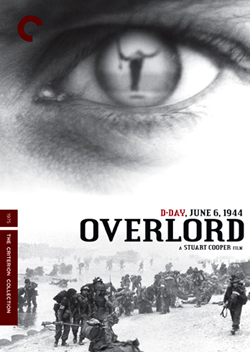|
Reviews of Recent Independent, Foreign, & Documentary Films in Theaters and DVD/Home Video
Directed by: Stuart Cooper. Produced by: James Quinn. Written by: Christopher Hudson & Cooper. Director of Photography: John Alcott. Edited by: Jonathan Gili. Music by: Paul Glass. Released by: Criterion Collection. Country of Origin: UK. 84 min. Not Rated. With: Brian Stirner, Davyd Harries, Nicholas Ball & Julie Neesam. DVD Features: New, restored high-definition transfer. Audio commentary by Cooper & actor Brian Stirner. “Mining the Archive,” a new video featuring Imperial War Museum film archivists detailing the war footage used in the film. “Capa Influences Cooper,” a new photo essay featuring Cooper on photographer Robert Capa. “A Test of Violence,” Cooper’s 1969 short film about Spanish artist Juan Genovés. “Cameramen at War,” the British Ministry of Information’s film tribute to newsreel & film service unit cameramen. “Germany Calling,” a 1941 British Ministry of Information propaganda film, clips of which appear in Overlord. Journals from two D-Day soldiers, read by Brian Stirner. Theatrical trailer. “Man Versus Machine,” a new essay on Overlord by film critic Kent Jones. Booklet: A short history of the Imperial War Museum. Excerpts from the Overlord novelization by Cooper & Christopher Hudson. This 1975 black-and-white film integrates the Imperial War Museum’s archival WWII footage, shot by military cameramen, with dramatized material of a soldier, Tom (Brian Stirner), undergoing training for D-Day, the Allied invasion of Normandy, the code name of which provides the movie’s title. Director Stuart Cooper intercuts archival and dramatized shots in sequences evoking the sensation that events are occurring simultaneously, culminating in a film that feels poetically representational, rather than in a fully realized narrative. While this may be the point, the effect casts Overlord as an intellectually provocative exercise in cinematic technique, which – despite a haunting musical score – has an overall less poignant effect than if the film had engaged the viewer in a more emotionally direct way. Perhaps this is due to the endeavor’s intrinsically experimental nature. While beautifully shot by John Alcott, the newer material does not visually correspond in an entirely convincing manner to the scratched, grainy quality of the archival footage. Viewed from this perspective, the film is a noble, if not entirely successful, effort. The visceral authenticity of the documentary-like images overwhelms the storyline’s melancholic abstractness, resulting in an imbalance that pulls the viewer out of the movie. On the other hand, the cross-cutting from the spectacle of bomb-dropping to the reality of charred corpses on the ground and a snippet of British anti-Nazi propaganda superbly conveys Overlord’s universally anti-war sentiment. Ultimately, the film cannot help but make one hope, in our own climate of heavily censored “embedded journalism,” that our current conflict is being documented for posterity, just as in the clips showcased in this movie. DVD Extras: The supplements are magnificent. Cooper and Stirner’s commentary provides analysis of and anecdotes about the film’s techniques and the thinking that went into Overlord's making, substantially increasing the viewer’s admiration of the finished work’s craft. It is incredible to discover that – considering the movie’s short running time – Cooper reviewed approximately 3,000 hours of footage while doing research. The reason for the story’s simplicity, Cooper explains, is that he was only willing to produce a “slip-cutting” framework supported by the historical footage. He also states (as he does on the “Capa Influences Cooper” photo essay) how the film’s emblematic and surrealistic shot, a close-up of Tom’s eye reflecting an image of a man collapsing, is a premonition.
The “Mining the Archive” video enlightens the viewer on the footage and the methodical way in which it was shot, and the excerpts from the journals of
two D-Day soldiers, read by Stirner, mirror the film’s fictional parts. Finally, Kent Jones’s essay on the film, included in a generally informative
booklet, provides food for thought on Overlord’s relationship to and status in the war film genre.
Reymond Levy
|

